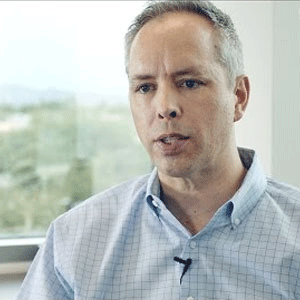THANK YOU FOR SUBSCRIBING

Digital Transformation: Engaging our People
Dr. Udo Schneider, Head of Active Ingredient Manufacturing, Bayer Crop Science


Dr. Udo Schneider, Head of Active Ingredient Manufacturing, Bayer Crop Science
Digitalization offers many opportunities within chemical manufacturing. Modern plants are equipped with an ever-increasing number of sensors which in connection with respective control systems collect “tons of data” per hour. Utilizing such data creates synergies in sharing data across the whole supply chain to gain valuable insights. On the one hand, “digitalization” and data science in the form of statistics is nothing new in chemical manufacturing – automation has been around for several decades and statistical process analyses even before that. On the other hand, there are untapped opportunities to drive automation to an even higher level, supplement the data available with IoT sensors and analyze the enormous amounts of data with new data science tools.
This personal experience with digitalization across the workforce combined with curiosity and long-standing experience is one of the keys to engaging people across all areas of manufacturing
This transformation can only be achieved by getting everyone working in manufacturing involved and engaged in digitalization. In private life the use of digital solutions is broadly adapted – for instance, people can control their smart home from their mobile device – setting room temperature, closing blinds or surveilling their home via video. In contrast, in chemical manufacturing some data is still collected or measured manually on paper or in simple spreadsheets, and processes are run by hand with established surveillance routines.
How did we in Active Ingredient Manufacturing (AIM) embark on this journey towards creating meaningful insights from implementing “Digital across AIM”? As a first step, a Plant Readiness Assessment was run in all ten sites across the Active Ingredient Manufacturing network at Bayer Crop Science. This facilitated self-assessment was performed in eight categories selecting subject matter experts addressing questions on a five-level maturity scale. This step excited the teams early on – to discuss what we have already achieved over the past couple of years and where we have identified opportunities for further growth. Next, these improvement ideas were substantiated in follow up discussions, defining scope, required resources, benefits, etc. These ideas were then pitched in a prioritization workshop and rated in the dimensions of benefit and effort by the site leadership team and selected SMEs. Based on these ratings, a first roadmap was drafted for the top-ranking projects – this allowed for some quick wins as a catalyst to onboard broader teams. Additional projects were ranked to provide enabling infrastructure and technology. In a final step, all projects were consolidated into an overarching project, clustering similar projects and realizing project tracking and portfolio management, allowing for governance and cross fertilization between the sites.
A network of Digital Site Leads was also established, to facilitate exchange between sites. Fostering collaboration and a stringent focus on a global budget managed by this group empowered the team to jointly decide which test-and-learn projects to support. This helped drive empowerment and engagement, and generated learnings across sites.
There have been some challenges along the way. One is working in a brownfield environment with solid automation of the plants, but also with equipment of varying ages and a grown and scattered landscape of digital tools. Another consideration is that these opportunities significantly change the way we work, and a broadened skillset, e.g., data analytics skills, is needed to be successful.
In summary, the bottom-up strategy in combination with fostering collaboration between sites, all based on a facilitated self-assessment, accelerated digital transformation in Active Ingredient Manufacturing significantly. Management offered platforms and the framework; content was added by the shop floor driving the “Digital@ AIM” initiative bottom-up rather than top-down. This created a healthy pull from all levels of the organization, generated a new level of curiosity amongst the teams feeding both energy and content to the initiative. Today, our skilled, curious, and engaged workforce leverage data & IoT opportunities for safer, more sustainable, and competitive production. It will change the way we look at and address topics in the future – an important ingredient for our transformation and cultural development.
Weekly Brief
I agree We use cookies on this website to enhance your user experience. By clicking any link on this page you are giving your consent for us to set cookies. More info
Read Also













